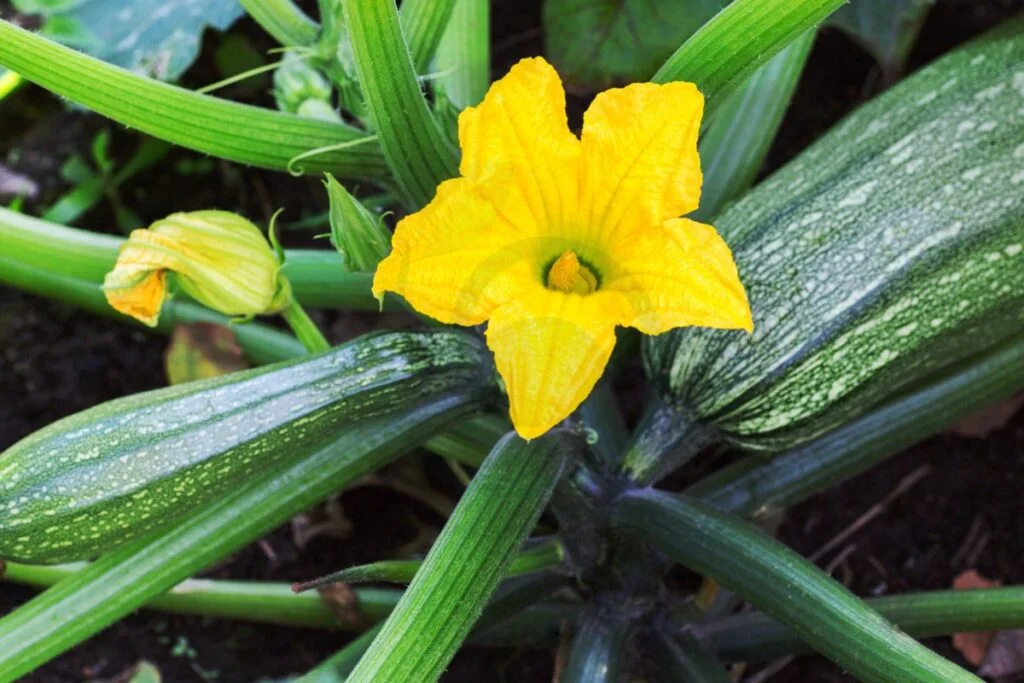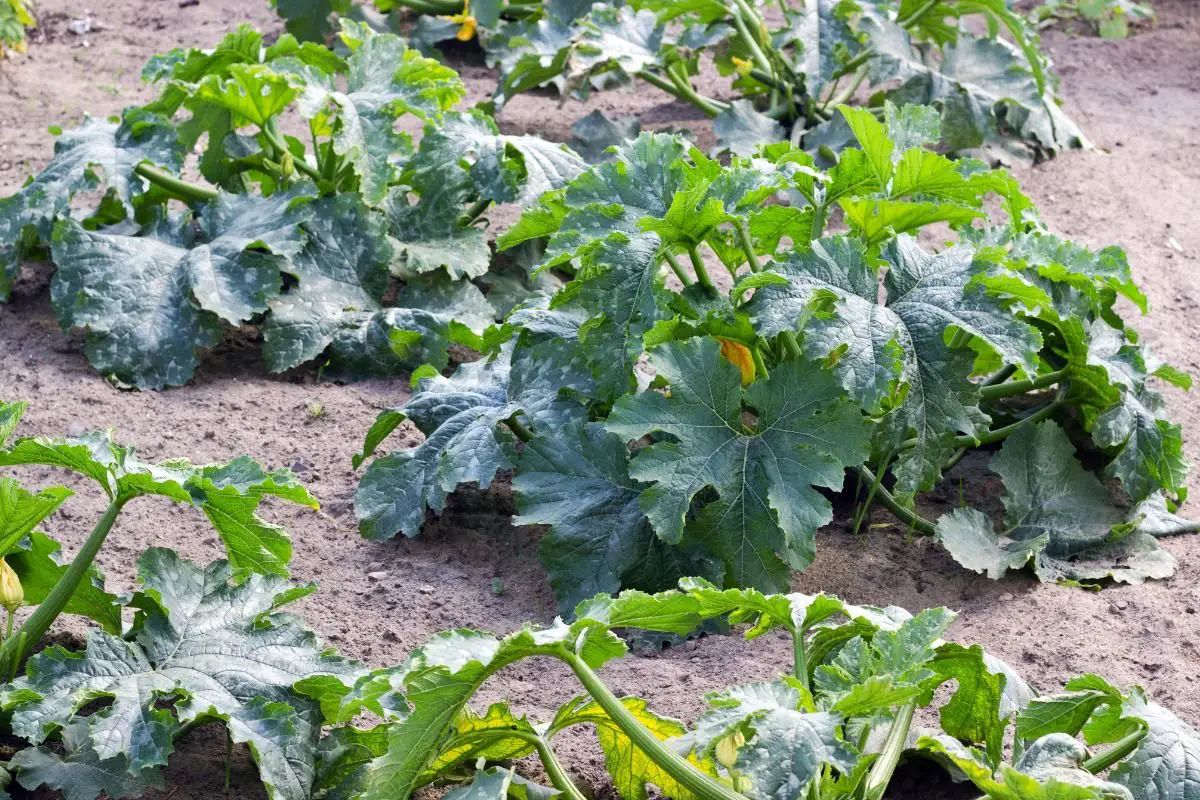Are you wondering, "How far apart should zucchini be planted?" Look no further for expert advice. With years of gardening experience and in-depth knowledge of plant spacing requirements, I can provide you with the guidance you need to ensure successful zucchini cultivation in your garden.
When planting zucchini, it's crucial to space the seeds or seedlings appropriately to optimize growth and yield. Generally, zucchini plants should be spaced about 24 to 36 inches apart within rows, with rows spaced approximately 3 to 5 feet apart. This spacing allows ample room for the plants to spread out as they grow, reducing competition for nutrients and sunlight. By following these spacing guidelines, you can promote healthy development and maximize the productivity of your zucchini plants.
For more insights into successful zucchini cultivation, including tips for soil preparation, watering, and pest management, stay tuned. With my expertise, you'll learn everything you need to know to grow abundant and delicious zucchinis in your own backyard.
Key Takeaways
- Plant zucchini seeds 1-2 weeks after the last frost date for your area.
- Choose a sunny site with well-draining soil for optimal zucchini growth.
- Prepare the soil by adding compost or aged manure to provide essential nutrients.
- Space zucchini seeds or seedlings 24-36 inches apart in rows that are 3-5 feet apart.
- Maintain healthy zucchini plants by fertilizing with a balanced fertilizer regularly.
- Water squash plants deeply and consistently, ensuring the soil stays moist but not waterlogged.
Ideal Planting Time
Season Selection
Plant zucchini during a warm season with consistent temperatures for optimal growth. Avoid extreme temperature fluctuations to ensure plant health.
- Choose a warm season for planting zucchini.
- Opt for seasons with consistent temperatures for best growth.
- Avoid extreme temperature fluctuations during planting.
Temperature Needs
Keep zucchini plants in temperatures ranging from 70°F to 95°F. Shield them from frost and cold weather to promote healthy growth.
- Ensure zucchini plants are exposed to temperatures between 70°F and 95°F.
- Protect plants from frost and cold temperatures.
- Provide adequate warmth for optimal growth.
Frost Considerations
To prevent damage, protect zucchini plants from frost by monitoring weather forecasts and implementing protective measures during frost-prone periods.
- Shield zucchini plants from frost to prevent damage.
- Monitor weather forecasts for potential frost occurrences.
- Implement protective measures during frost-prone periods.
Selecting Planting Site
Sunlight Requirements
Zucchini plants thrive in areas with 6-8 hours of sunlight daily for optimal growth. Direct sunlight is crucial for their health and development, so ensure they receive adequate exposure. Avoid shading the plants to promote robust growth and fruitful harvests.
Soil Type
For successful zucchini cultivation, choose well-draining soil that is rich in organic matter. Opt for soil types like sandy loam or loamy soil, which provide the ideal environment for zucchini growth. Avoid waterlogged or compacted soils as they can hinder plant development.
Space Availability
Allocate ample space between zucchini plants to ensure proper growth and productivity. Consider a plant spacing of 3-4 feet apart to prevent overcrowding, allowing each plant enough room to spread out comfortably. Adequate spacing also facilitates air circulation around the plants, reducing the risk of diseases.
Soil Preparation Steps
Testing pH
Before planting zucchini, test soil pH levels to ensure optimal conditions for growth. Aim for a pH range of 6.0 to 7.5, which is ideal for zucchini plants. Make adjustments using suitable amendments if the pH falls outside this range.
Adding Nutrients
To promote healthy growth, supplement the soil with organic compost or fertilizer before planting zucchini seeds. Ensure the soil is rich in essential nutrients such as nitrogen, phosphorus, and potassium. It's crucial to maintain soil fertility throughout the growing season to support robust plant development.
Loosening Soil
Prior to planting zucchini seeds, it's essential to loosen the soil to a depth of 12 inches. This process helps break up compacted soil, improving drainage and allowing roots to penetrate easily. By creating a loose and friable soil texture, you provide an optimal environment for healthy zucchini growth.
Planting Zucchini Seeds

Seed Depth
Plant zucchini seeds at a depth of one-half inch in the soil. Avoid planting them too deep. Consistent seed depth is crucial for uniform sprouting.
Watering After Planting
After planting zucchini seeds, ensure to water the soil adequately. Keep the soil moist but not waterlogged. Overwatering can lead to seed rot and hinder germination.
Optimal Zucchini Spacing
In Rows
When planting zucchini in rows, space each seed or seedling approximately 24-36 inches apart. This distance allows the plants to have ample room for growth and prevents overcrowding. Adequate spacing also aids in proper air circulation, reducing the risk of diseases.
To ensure optimal zucchini growth, consider leaving 3-4 feet between rows. This spacing facilitates easy access for watering, weeding, and harvesting. Proper row spacing promotes healthy plant development and minimizes competition for nutrients among neighboring zucchini plants.
Raised Beds
In raised beds, plant zucchinis with a spacing of 18-24 inches between each plant. The compact nature of raised beds requires closer planting to maximize space utilization efficiently. Maintaining this distance enables the plants to thrive without being cramped.
When setting up zucchinis in raised beds, aim for a row spacing of 2-3 feet. This gap provides sufficient room for the plants to spread out their leaves and grow unhindered. With adequate spacing between rows, zucchinis can receive adequate sunlight and nutrients for optimal production.
Vertical Gardening
For vertical gardening, position zucchinis approximately 12-18 inches apart to accommodate their vertical growth habit. Vertical structures such as trellises or cages support the plants as they climb upwards, maximizing space efficiency in small gardens or limited areas.
When implementing vertical gardening techniques for zucchinis, maintain a vertical spacing of 2-3 feet between rows. This setup allows for proper airflow around the plants and ensures that each zucchini receives ample sunlight for photosynthesis. Vertical gardening encourages upward growth while conserving ground space.
Nourishing Your Zucchini Plants
Fertilizing Schedule
Zucchini plants thrive when fertilized properly throughout their growth cycle. Begin by fertilizing the soil before planting zucchini seeds or seedlings. Use a balanced fertilizer with equal parts of nitrogen, phosphorus, and potassium. After planting, apply fertilizer every three weeks to ensure steady growth and abundant fruit production. Avoid over-fertilizing as it can lead to excessive foliage growth at the expense of fruit development.
To keep your zucchini plants healthy and productive, consider creating a fertilizing schedule that aligns with their needs. Monitor the plant's growth and adjust the fertilization frequency accordingly. During peak growing seasons, such as summer, increase the frequency to every two weeks for optimal results. Remember to water the plants after applying fertilizer to help nutrients penetrate the soil and reach the roots effectively.
Organic Options
Opting for organic fertilizers provides a natural and sustainable way to nourish your zucchini plants without harmful chemicals. Consider using compost, well-rotted manure, or organic liquid fertilizers rich in nutrients like seaweed extract or fish emulsion. These options not only feed the plants but also improve soil structure and promote beneficial microbial activity.
When choosing organic fertilizers for your zucchini plants, prioritize those with a balanced nutrient profile to support overall plant health. Organic options release nutrients slowly, ensuring a consistent supply for sustained growth. Organic fertilizers contribute to soil fertility, enhancing long-term plant vitality and resilience against pests and diseases.
Watering Techniques
Frequency
Zucchini plants require consistent watering to thrive, especially during the hot summer months. Water your zucchinis deeply but infrequently, ensuring the soil remains moist but not waterlogged. Aim to water your zucchini plants 1-2 times per week, depending on your climate and soil drainage. Monitor the soil moisture regularly to prevent under or overwatering, both of which can harm the plants.
Drip Irrigation Benefits
Implementing a drip irrigation system for your zucchini plants offers several benefits. Drip irrigation delivers water directly to the plant roots, reducing water wastage through evaporation or runoff. This method ensures consistent moisture levels, promoting healthy growth and minimizing the risk of diseases caused by wet foliage. Drip irrigation helps control weeds by targeting water only where needed.
Pest and Disease Management
Common Pests
Zucchini plants are susceptible to various pests that can hinder their growth and productivity. Common pests include aphids, which are small insects that feed on plant sap, causing leaves to curl and distort. Squash bugs are another common pest that can damage zucchini plants by sucking sap from the leaves, leading to wilting and yellowing.
To manage aphids, introduce beneficial insects like ladybugs or use a strong stream of water to dislodge them from the plant. For squash bugs, handpick them off the plant or set up traps using boards or newspapers placed near the zucchini plants.
Disease Prevention
Preventing diseases is crucial for maintaining healthy zucchini plants. One common disease that affects zucchinis is powdery mildew, which presents as a white powdery substance on the leaves, inhibiting photosynthesis and stunting growth. To prevent powdery mildew, ensure proper air circulation around the plants by spacing them adequately during planting.
Another preventive measure is to avoid overhead watering, as wet foliage creates an ideal environment for fungal diseases like powdery mildew to thrive. Instead, opt for drip irrigation or water at the base of the plant to keep the foliage dry and minimize disease spread.
Harvesting Your Zucchini

Signs of Readiness
When your zucchini reaches around 6 to 8 inches in length and about 1 to 2 inches in diameter, it's ready for harvest. Look for a glossy skin and firm texture as signs of readiness. Another indicator is a vibrant color, typically dark green or yellow, depending on the variety.
To ensure you pick your zucchinis at the right time, gently press the skin with your fingernail. If the skin punctures easily, it's ripe and ready for picking. Check the stem connecting the fruit to the plant; if it's easy to cut with a knife or pruners, your zucchini is good to go.
Harvesting Method
When harvesting zucchini, use a sharp knife or garden shears to cut the fruit from the vine carefully. Make sure to leave about an inch of stem attached to the fruit; this helps extend its shelf life. Avoid twisting or pulling the zucchini off the vine as this can damage both the fruit and the plant.
After harvesting, handle your zucchinis with care to prevent any bruising or damage. Store them in a cool, dry place or refrigerate them if you're not using them immediately. Remember that freshly picked zucchinis have the best flavor and texture, so try to use them within a few days for optimal taste.
Closing Thoughts
By following the steps outlined in this guide, you now have a solid foundation to ensure your zucchini plants thrive. From selecting the right planting site to mastering watering techniques and managing pests, you are well-equipped to nurture healthy zucchinis. Remember, proper spacing between plants is crucial for optimal growth and yield. Stay diligent in maintaining your garden, and soon you will be rewarded with a bountiful harvest of fresh zucchinis to enjoy.
Now that you have the knowledge to grow flourishing zucchinis, it's time to get your hands dirty and put these tips into action. Start planting your zucchinis with confidence, knowing that you have the expertise to care for them properly. Share your newfound knowledge with fellow gardening enthusiasts and continue to expand your skills in cultivating a thriving vegetable garden.
Frequently Asked Questions
How should I space my zucchini plants for optimal growth?
To ensure healthy zucchini plants, space them about 24 to 36 inches apart in rows that are 3 to 6 feet apart. This spacing allows for proper air circulation and room for the plants to grow without overcrowding.
Can I plant zucchini seeds close together?
Avoid planting zucchini seeds too close together as overcrowding can lead to poor airflow, increased risk of diseases, and competition for nutrients. Follow the recommended spacing guidelines to promote healthy plant growth and maximize yields.
When is the best time to plant zucchini?
Plant zucchini seeds or seedlings after the last frost date in your area when soil temperatures have warmed up to around 60°F. This timing usually falls in late spring or early summer, providing optimal conditions for zucchini growth and development.
How often should I water my zucchini plants?
Water your zucchini plants consistently, aiming for about 1-2 inches of water per week. Adjust based on weather conditions; water more during hot, dry periods and less during rainy spells. Ensure the soil is moist but not waterlogged to support healthy plant growth.
What are common pests and diseases that affect zucchini plants?
Zucchini plants are susceptible to pests like aphids, squash bugs, and diseases such as powdery mildew and blossom end rot. Implement preventive measures like regular inspection, proper spacing, and maintaining good garden hygiene to minimize these issues.
Image Source: Paid image from CANVA



